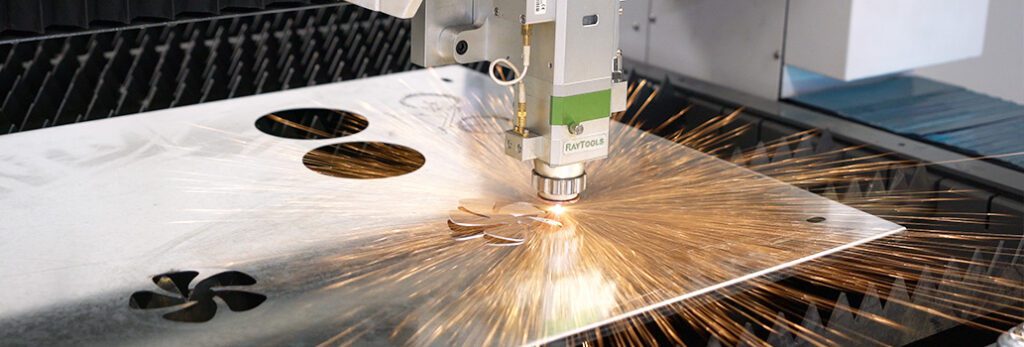Turret Punching vs Laser Cutting: Which is Right for Your Sheet Metal Project?

Sheet metal fabrication involves cutting, bending, and shaping metal sheets into various parts and products. There are different methods and machines that can perform sheet metal cutting, such as turret punching and laser cutting. But which one is better for your project? In this post, we will compare the two techniques and explore their pros and cons.
What is Turret Punching?
Turret punching is a process that uses a punch and a die to create holes and shapes in sheet metal. The punch is a tool that has the desired cutout shape. The die is a metal plate that supports the sheet metal and has a matching hole. The punch presses into the metal with high force, pushing the excess metal into the die and creating the cutout.
Turret punching machines have a rotating turret that holds multiple punches and dies of different shapes and sizes. The machine can change the punch and die according to the design and program, allowing for various patterns and configurations. Turret punching machines are CNC controlled, which automate the punching process and ensure accuracy.
What is Laser Cutting?
Laser cutting is a process that uses a focused beam of light and gas to vaporize sheet metal. The laser beam is generated by a laser source and guided by mirrors and lenses to the cutting head. The cutting head focuses the beam into a spot with focussed power density. This heats up the sheet metal to its melting and vaporization point. Gas, such as oxygen or nitrogen, blows through the cut area and removes the melted and vaporized metal.
Laser cutting machines are also CNC systems, which controls the movement of the cutting head and laser beam. Following the programmed design and material. Laser cutting machines can cut complex and intricate shapes and patterns, as well as thick and hard materials.
Advantages and Disadvantages of Turret Punching and Laser Cutting
Both turret punching and laser cutting have their own advantages and disadvantages. This depends on the type, thickness, and complexity of the sheet metal, and the cost & speed of the process. Here are some of the main factors to consider when choosing between the two methods:
Decision factors:
- Versatility: Laser cutting is more versatile than turret punching, as it can cut any shape and contour. Laser cutting handles thicker and harder materials, such as stainless steel, while turret punching is limited. However, turret punching can perform some secondary operations that laser cutting cannot, such as tapping, blanking, forming, extruding, and deburring.
- Cost: Turret punching is more cost-effective than laser cutting, as it has lower setup, maintenance, and operation costs. Turret punching also saves on mold costs, as it can use standard punches and dies for different projects. Laser cutting requires more energy, ventilation, and laser gases, which increase the cost. Laser cutting also has a higher risk of thermal distortion, which affect the quality and cost of the final product.
- Speed: Laser cutting is faster than turret punching for complex shapes, it cuts continuously and precisely without tool change. Laser cutting can also perform up to 10,000 hits per minute, compared to turret punching’s 1,000. However, turret punching is faster for simple shapes, as it can cut multiple holes and shapes at once. Turret punching also has shorter lead times and higher automation, which improve the efficiency and productivity.
- Quality: Laser cutting has higher quality than turret punching, as it produces smooth and clean edges, without burrs, marks, or deformation. Laser cutting can also achieve tighter tolerances and finer details, as well as consistent and accurate results. Turret punching can cause some quality issues, such as uneven edges, burrs, and marks. Especially for thin and soft materials. Turret punching can also have some variations and errors, due to the wear and tear of the punch and die.
Conclusion
Both methods are effective and efficient for sheet metal cutting. But they have different strengths and weaknesses. The best method for your project depends on the factors such as. Type, thickness, and complexity of the sheet metal, and the cost, speed, and quality of the process. Please consider these factors and consult a professional fabrication company to find the optimal solution for your needs.